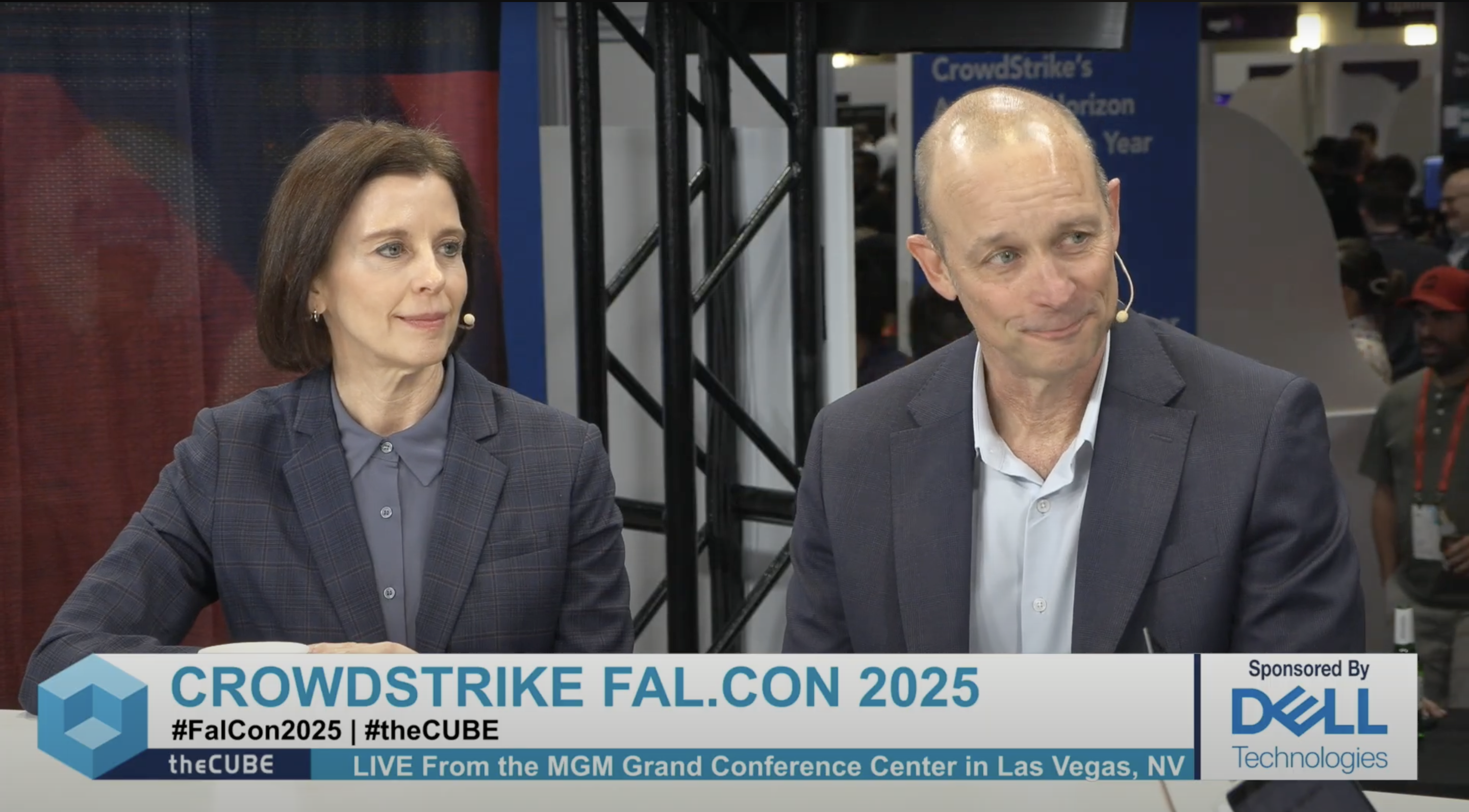
Artificial intelligence personal computers are redefining what a PC can do, thanks to neural processing units that run deep learning directly on the device. By cutting out the cloud and making speed native to the device, AI PCs promise efficiency that could significantly alter enterprise and consumer workflows.
But these promises come with new risks. Endpoints are now the battleground where adversaries seek fresh vulnerabilities. Todd Cramer (pictured, right), senior director of security ecosystem business development, Intel Client Computing Division, at Intel Corp., warns that on-device AI must be carefully placed to deliver value. Meanwhile, Lori Zwilling (left), senior director of software product management at Dell Technologies Inc., stresses the pressure to keep these systems resilient, noting that AI is more than just a feature inviting new exposures, but is itself a frontline of defense.
“We’re better off now with AI and security, really, for a number of reasons,” she said. “It’s going to detect vulnerabilities and be able to mitigate them much sooner. If a breach does get through, the mean time to resolution should also be reduced.”
Zwilling and Cramer spoke with theCUBE’s Dave Vellante and Rebecca Knight at Fal.Con, during an exclusive broadcast on theCUBE, SiliconANGLE Media’s livestreaming studio. They discussed how AI PCs are reshaping performance and security at the endpoint, with on-device processing and ecosystem integration emerging as the strategic backbone for resilience at scale. (* Disclosure below.)
AI PCs turn the endpoint into the frontline
By running AI locally, enterprises are poised to better protect data that should never leave the device, which is transforming data loss prevention. Traditional data loss prevention tools relied on rigid, rule-based detection, but on-device AI models bring semantic search and natural language capabilities that detect threats more effectively, according to Cramer.
“Most DLP in the industries have a bad rap, poor efficacy, false positives,” he said. “But what we’ve done is run an AI model that uses the [graphics processing unit] on the client, able to analyze documents for all sorts of classification. It does a semantic search, it’s natural language, it finds it better … running AI on-client on these AI PCs is actually fixing it.”
The real advantage comes when resilience is tied directly to manageability. Dell’s philosophy centers on visibility into both security and health telemetry, delivered through the management tools enterprises already use. That approach gives organizations the context they need to spot issues early and respond quickly, according to Zwilling.
“A healthy PC is a secure PC,” she said. “We have unique telemetry, telemetry that’s very visible, whether that’s security telemetry or manageability telemetry. We make it visible to our customers. We meet our customers where they’re at in their portals of choice, whether it’s Intune for manageability [or] CrowdStrike for security.”
Here’s the complete video interview, part of SiliconANGLE’s and theCUBE’s coverage of Fal.Con:
(* Disclosure: TheCUBE is a paid media partner for Fal.Con. Neither Dell Technologies Inc. and Intel Corp., the sponsor of theCUBE’s event coverage, nor other sponsors have editorial control over content on theCUBE or SiliconANGLE.)
Photo: SiliconANGLE



